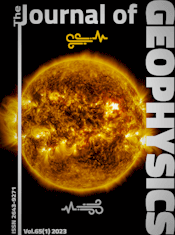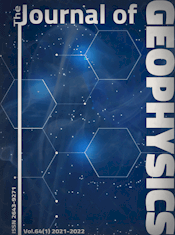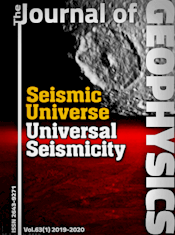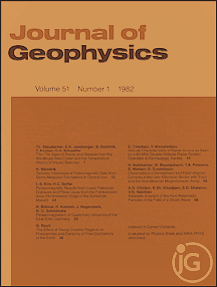Inversion of satellite magnetic anomaly data
Article Sidebar
Published:
Dec 22, 1978
Keywords:
Magnetic anomalies,
Crustal magnetization,
Equivalent source
Volumes
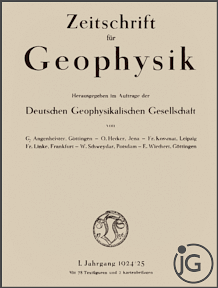
Vols. 1-18 (1924-1944), ISSN 0044-2801
Main Article Content
M.A. Mayhew
Geophysics Branch, NASA Goddard Space Flight Center, Greenbelt, MD USA
Abstract
A method of finding a first approximation to a crustal magnetization distribution from inversion of satellite magnetic anomaly data is described. Magnetization is expressed as a Fourier series in a segment of spherical shell. Input to this procedure is an equivalent source representation of the observed anomaly field. Instability of the inversion occurs when high frequency noise is present in the input data, or when the series is carried to an excessively high wave number. Preliminary results are given for the United States and adjacent areas.
 ARK: https://n2t.net/ark:/88439/y090977
ARK: https://n2t.net/ark:/88439/y090977
Permalink: https://geophysicsjournal.com/article/159
Article Details
How to Cite
Section
References
Cain, J.C., Hendricks, S.J., Langel, R.A., Hudson, W.V. (1967) A Proposed Model for the International Geomagnetic Reference Field-1965: J. Geomag. Geoelectr. 19:335-355
Cain, J.C., Davis, W.M. (1973) Low Latitude Variations of the Magnetic Field: In: Cain, J.C. (Ed.) Symposium on Low Level Satellite Surveys, pp. 67-87. Internat'I. Assoc. of Geomagnetism and Aeronomy, Paris
Gradshteyn, LS., Ryzhik, I.M. (1965) Table of Integrals. Series and Products, A. Jeffrey, ed. p. 83. Academic Press, New York
Langel, R.A., Sweeney, R.E. (1971) Asymmetric Ring Current at Twilight Local Time: J. Geophys. Res. 76:4420-4427
Regan, R.D., Cain, J.C., Davis, W.M. (1975) A Global Magnetic Anomaly Map: J. Geophys. Res. 80:794-802
Cain, J.C., Davis, W.M. (1973) Low Latitude Variations of the Magnetic Field: In: Cain, J.C. (Ed.) Symposium on Low Level Satellite Surveys, pp. 67-87. Internat'I. Assoc. of Geomagnetism and Aeronomy, Paris
Gradshteyn, LS., Ryzhik, I.M. (1965) Table of Integrals. Series and Products, A. Jeffrey, ed. p. 83. Academic Press, New York
Langel, R.A., Sweeney, R.E. (1971) Asymmetric Ring Current at Twilight Local Time: J. Geophys. Res. 76:4420-4427
Regan, R.D., Cain, J.C., Davis, W.M. (1975) A Global Magnetic Anomaly Map: J. Geophys. Res. 80:794-802




